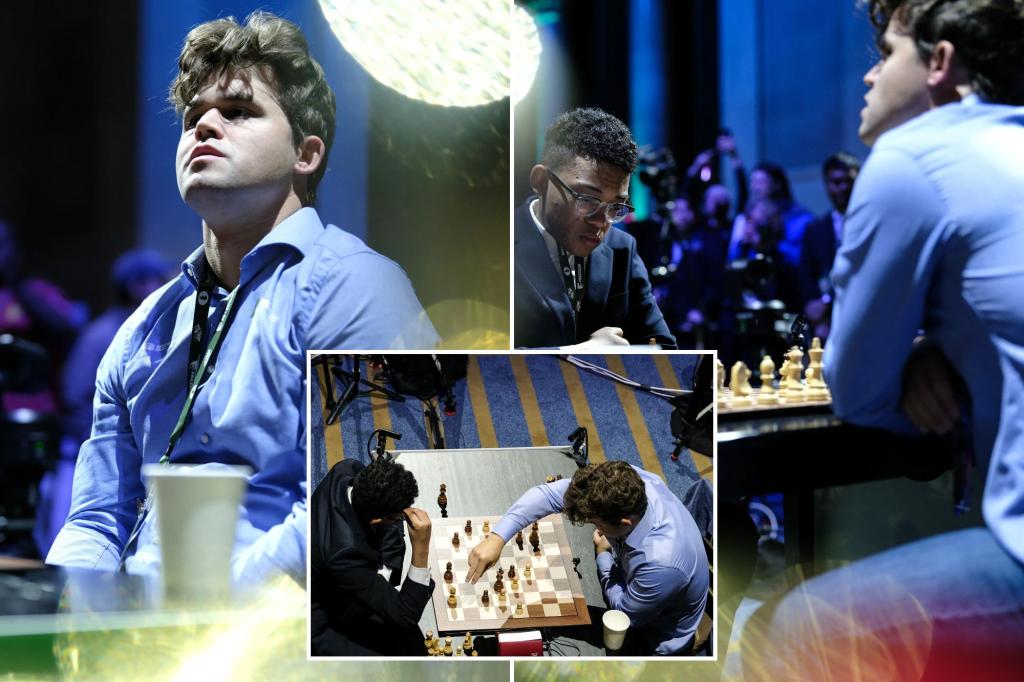The chess world witnessed a clash between tradition and modernity, symbolized by a pair of jeans, as world number one Magnus Carlsen forfeited a tournament due to a dress code dispute. Carlsen, known for his exceptional skill and unconventional approach, arrived at the Rapid World Championship in Almaty, Kazakhstan, wearing jeans and a sportcoat, attire deemed unacceptable by the International Chess Federation (FIDE) dress code. This seemingly minor infraction ignited a controversy that escalated quickly, leading to Carlsen’s withdrawal from both the Rapid and Blitz World Championships, sparking discussions about the relevance and application of traditional norms in the evolving landscape of chess.
The incident unfolded during the Rapid World Championship, a separate but concurrent event held alongside the Blitz Championship. FIDE officials, citing longstanding regulations, fined Carlsen $200 and requested he change his attire. While acknowledging the existence of the rule, Carlsen argued that he had offered to comply the following day, but the officials remained inflexible. The situation escalated into a “matter of principle” for Carlsen, who felt the punishment was disproportionate and the disruption to his concentration between games unwarranted. His decision to forfeit the tournament underscored his conviction and brought to light the growing tension between established norms and the contemporary atmosphere of the game.
The International Chess Federation, recognizing the gravity of the situation and the attention it drew to their dress code policies, responded swiftly. FIDE President Arkady Dvorkovich acknowledged the need for a re-evaluation of the existing rules, stating that Carlsen’s protest highlighted the evolving nature of chess as a global and accessible sport. He expressed a willingness to consider amendments to the dress code, suggesting the possibility of permitting “appropriate jeans” paired with a jacket, along with other “elegant minor deviations,” for future tournaments. This concession signaled a potential shift towards a more relaxed and modern approach to attire in professional chess.
Carlsen, in a video message posted on his chess app’s YouTube channel, articulated his perspective on the incident. He reiterated his belief that the situation was mishandled by FIDE and that the punishment was excessive. While admitting he could have changed his attire, he explained that he chose not to out of principle. He emphasized the importance of player comfort while maintaining a reasonable level of presentability, suggesting a middle ground where players feel comfortable and project a professional image. His willingness to engage in dialogue with FIDE indicated a shared desire to find a mutually agreeable solution that respects both tradition and the modern context of the game.
Following FIDE’s conciliatory gesture, Carlsen confirmed his participation in the World Blitz Championship, stating his intention to compete while wearing jeans. This decision, welcomed by many fans who had expressed support for his stance, signified a step toward a potential resolution of the dress code debate. Carlsen’s participation not only ensured the presence of the world’s top-ranked player in a prestigious championship but also underscored the importance of open communication and adaptability in addressing evolving norms within the chess community.
The “Jeansgate” incident, as it came to be known, transcended the realm of a simple dress code violation, becoming a symbolic debate about the evolution of chess. Carlsen’s stand, while initially seeming to be about a pair of jeans, highlighted the broader question of how traditional rules adapt to the changing dynamics of a globalized and increasingly accessible sport. The incident sparked a conversation about balancing respect for established customs with the need for a more modern and inclusive environment that caters to the diverse backgrounds and preferences of players worldwide. The willingness of both Carlsen and FIDE to engage in dialogue and explore potential adjustments to the dress code suggests a positive step towards finding a harmonious balance between tradition and modernity in the world of chess.

